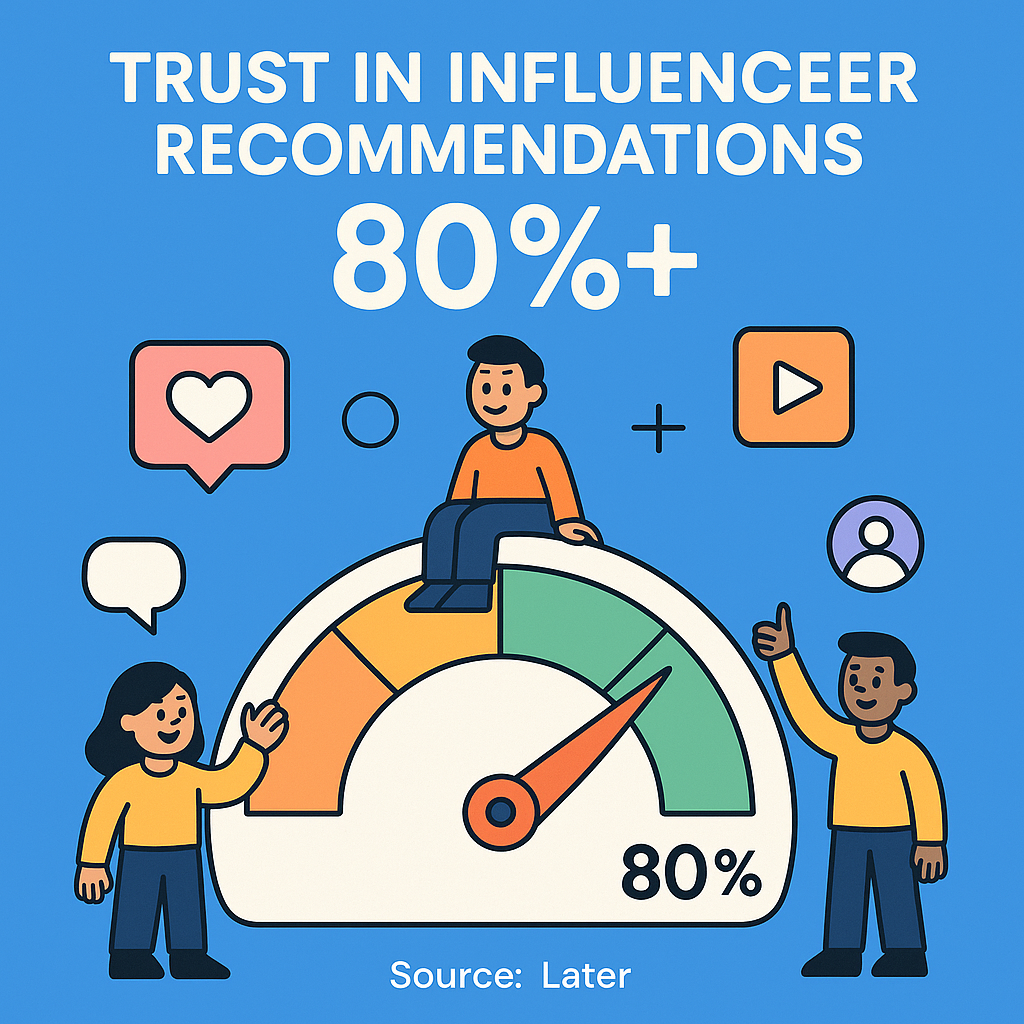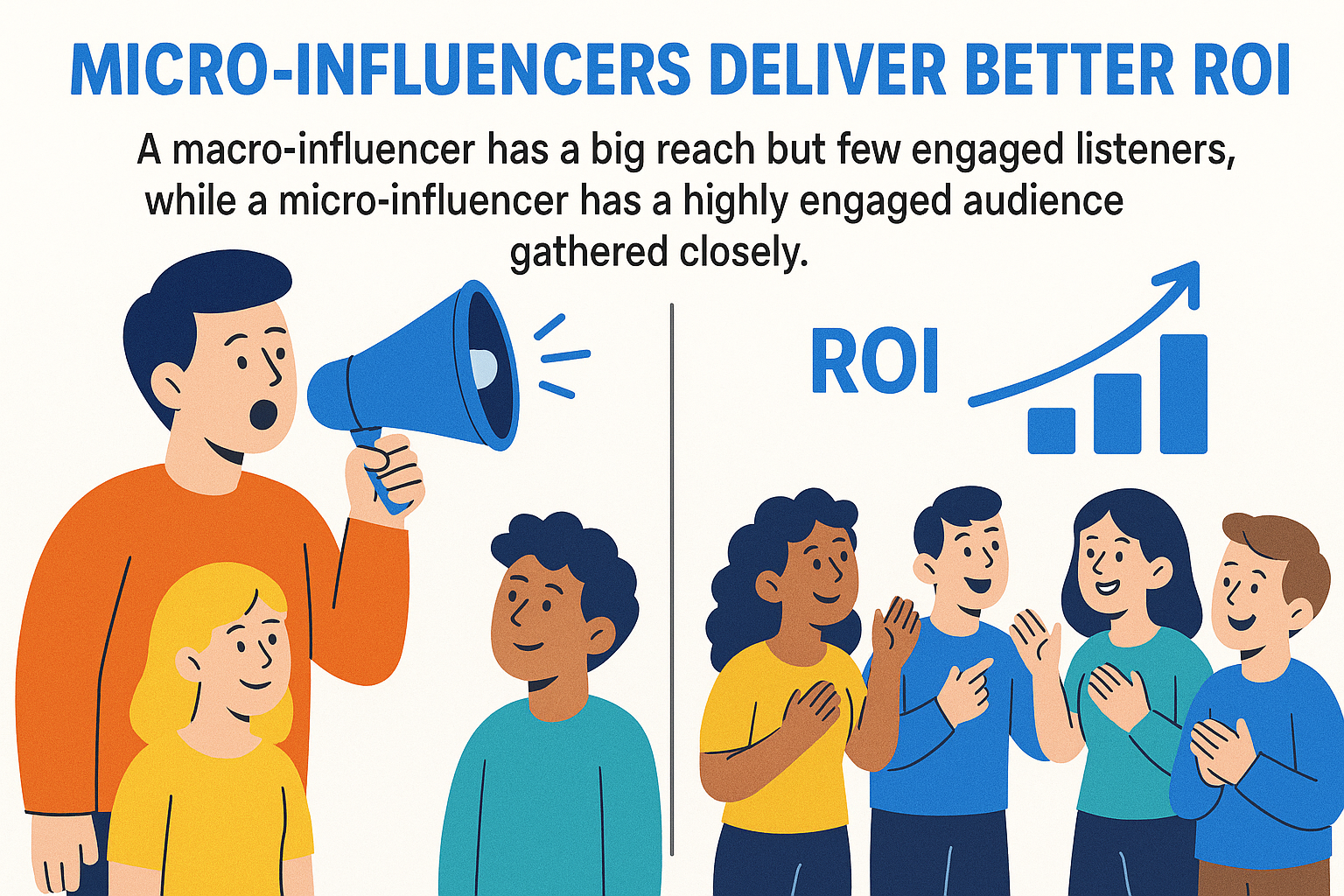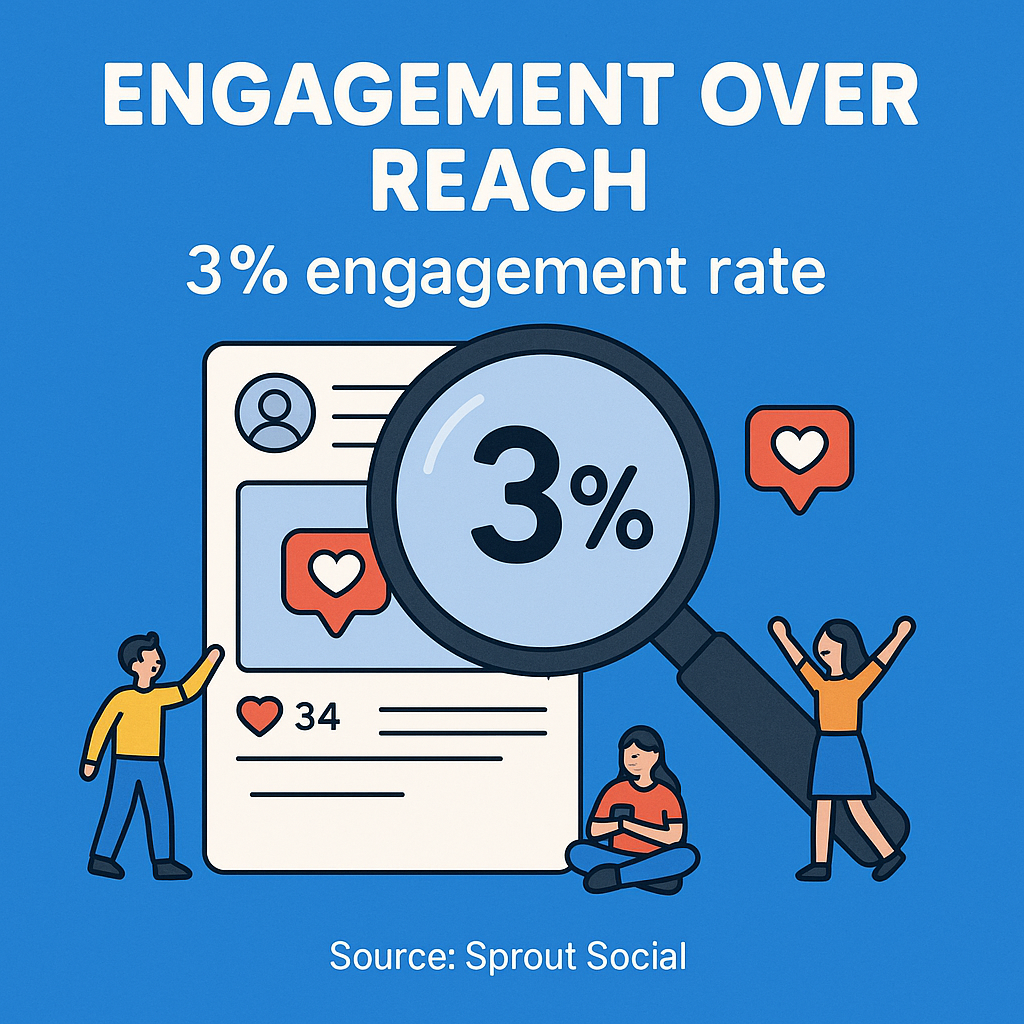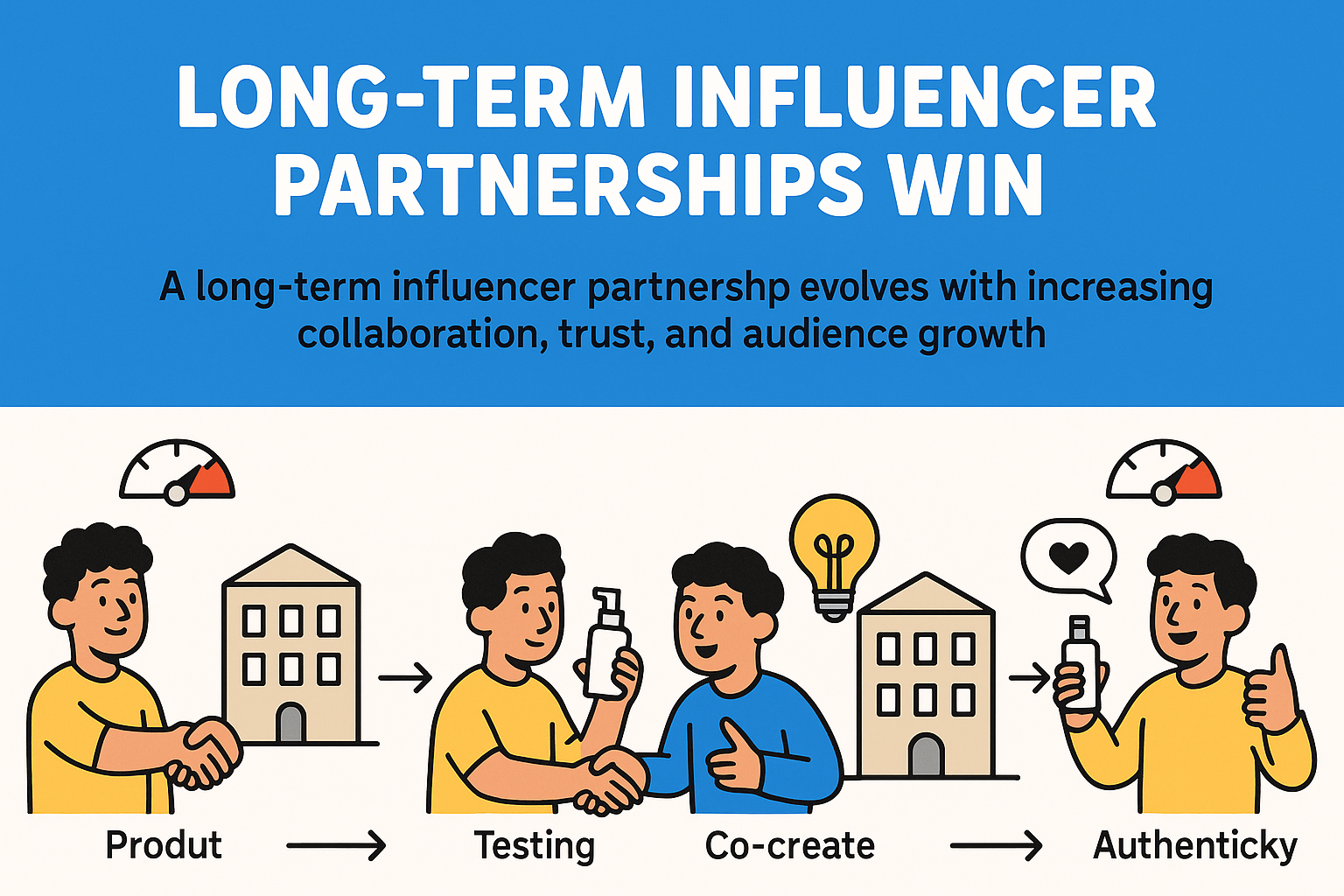Top Influencer Marketing Best Practices for Success
Picture this: You’ve just spent three hours scrolling through potential influencers, your coffee’s gone cold, and you’re still not sure if that lifestyle blogger with 50K followers is the right fit for your brand. Sound familiar? If influencer marketing feels like throwing darts in the dark, you’re definitely not alone. With over 80% of customers trusting recommendations from influencers more than traditional ads (Source: Later), getting this right isn’t just nice-to-have anymore—it’s essential.

The thing is, successful influencer campaigns aren’t about finding the biggest names or throwing money at everyone with a blue checkmark. They’re about building authentic partnerships that actually move the needle for your business. Whether you’re a marketing manager trying to prove ROI or a small business owner dipping your toes into influencer waters for the first time, this guide breaks down the strategies that separate winning campaigns from expensive mistakes.
We’ll walk you through everything from setting realistic goals and finding the perfect micro-influencers to measuring success and avoiding common pitfalls. By the end, you’ll have a clear roadmap for creating influencer partnerships that don’t just generate buzz—they drive real results.
Setting Clear Goals and Budget Framework
Before you start reaching out to anyone, you need to know exactly what you’re trying to accomplish—and how much you’re willing to spend to get there. The most successful influencer campaigns start with crystal-clear objectives that tie directly to business outcomes, not vanity metrics that look impressive in reports but don’t pay the bills.
Smart goal-setting means being specific about what success looks like. Instead of “increase brand awareness,” try “generate 500 qualified leads from influencer content within 60 days” or “drive 25% more traffic to our product pages through influencer partnerships.” These SMART goals (Specific, Measurable, Achievable, Relevant, Time-bound) give you something concrete to optimize toward (Source: Brandwatch).
Budget allocation often trips up even experienced marketers. Here’s the reality: you don’t need massive budgets to see results, but you do need realistic expectations. Micro-influencers (10K–100K followers) often deliver better ROI than macro-influencers because their audiences are more engaged and niche-focused. A well-planned campaign with five micro-influencers frequently outperforms a single celebrity partnership that costs ten times more.

| Campaign Goal | Best Influencer Type | Budget Range | Key Metrics |
|---|---|---|---|
| Brand Awareness | Macro-influencers | $5,000-$25,000 | Reach, Impressions, Brand Mentions |
| Lead Generation | Micro-influencers | $2,000-$10,000 | Click-through Rate, Conversions, Cost Per Lead |
| Product Sales | Nano + Micro Mix | $1,500-$8,000 | Revenue, Cost Per Acquisition, Return on Ad Spend |
| Community Building | Nano-influencers | $500-$3,000 | Engagement Rate, Follower Growth, Community Interactions |
Finding and Vetting the Right Influencers
Here’s where most campaigns either take off or crash and burn. Finding influencers who genuinely align with your brand values isn’t about spreadsheets full of follower counts—it’s detective work. The best partnerships happen when an influencer’s audience naturally overlaps with your ideal customers, and their content style feels authentic to your brand message.
Start by focusing on engagement over reach. An influencer with 15,000 highly engaged followers in your niche will typically deliver better results than someone with 150,000 passive followers who barely interact with posts. Look for engagement rates above 3% for micro-influencers and consistent interaction quality in comments—real conversations, not just emoji spam (Source: Sprout Social).

AI-powered tools like Sprout Social make the discovery process much more efficient by filtering based on demographics, engagement metrics, content style, and audience authenticity. These platforms can quickly identify potential partners whose audiences match your customer personas, saving hours of manual research. When you’re connecting with influencers, having data-backed insights about their audience makes your outreach much more compelling.
Don’t skip the vetting process—it’s what separates professional campaigns from amateur hour. Check their previous brand partnerships to see if they maintain consistent quality and authentic voice. Review their content for the past 3-6 months to ensure they haven’t had any controversial moments that could reflect poorly on your brand. Most importantly, engage with their content naturally before reaching out to get a feel for their community and interaction style.
| Red Flags to Avoid | Green Flags to Seek | How to Verify |
|---|---|---|
| Fake follower spikes | Organic growth patterns | Check follower growth with analytics tools |
| Generic, templated content | Authentic personal storytelling | Review 10+ recent posts for originality |
| Low comment-to-like ratios | Meaningful audience interactions | Analyze engagement quality, not just quantity |
| Controversial past partnerships | Brand-aligned previous collaborations | Google search + social media history review |
Campaign Execution and Creative Collaboration
This is where the magic happens—or where everything falls apart. The most successful influencer campaigns strike the perfect balance between clear brand guidelines and creative freedom. Micromanaging every word kills authenticity, but providing zero direction leads to content that misses the mark entirely.
Start with a solid brief that covers your core message, key talking points, and any legal requirements (like FTC disclosure), but leave room for the influencer’s unique voice and style. They know their audience better than you do, so trust their expertise about what resonates. The best campaigns feel like natural recommendations from a friend, not obvious advertisements reading from a script.

Timing and content variety matter more than most brands realize. Instead of one big post, consider spreading touchpoints across multiple content formats—Instagram Stories, Reels, and feed posts all serve different purposes in the customer journey. When reaching out to micro-influencers, discuss a content mix that provides multiple opportunities for audience engagement while maintaining message consistency.
- Initial teaser content: Stories or posts building anticipation around the partnership
- Core campaign content: Detailed review, tutorial, or product integration
- Follow-up engagement: Responding to audience questions and additional content
- Long-term advocacy: Continued authentic mentions and recommendations
- Cross-platform promotion: Adapting content for different social media channels
Don’t forget about content curation strategies that can amplify your influencer partnerships. When influencers create content about your brand, that becomes valuable content you can reshare across your own channels (with permission). This extends the campaign’s reach and provides social proof for your brand’s credibility.
Measurement and ROI Analysis
Here’s the part that separates the pros from everyone else: actually measuring what matters. Too many campaigns get caught up in vanity metrics that look impressive in reports but don’t translate to business value. Real ROI measurement means tracking the entire customer journey from initial influencer exposure to final purchase—and everything in between.
The key is setting up proper attribution from day one. Use unique discount codes, UTM tracking links, and platform-specific analytics to monitor how influencer content drives traffic, engagement, and conversions. Strong social media marketing practices include establishing clear measurement frameworks before campaigns launch, not scrambling to find data afterward.
| Metric Type | What to Track | Why It Matters | Measurement Tools |
|---|---|---|---|
| Awareness | Reach, Impressions, Brand Mentions | Shows campaign visibility and exposure | Platform analytics, brand monitoring tools |
| Engagement | Likes, Comments, Shares, Saves | Indicates audience interest and connection | Native platform insights, third-party analytics |
| Traffic | Click-through Rate, Website Visits | Measures intent and consideration | Google Analytics, UTM tracking, link shorteners |
| Conversion | Sales, Leads, Sign-ups | Demonstrates actual business impact | E-commerce platforms, CRM systems, discount codes |
Smart measurement goes beyond immediate campaign results. Track longer-term brand lift, customer lifetime value from influencer-acquired customers, and how influencer content performs when repurposed across your own channels. The most valuable insights often emerge 30-90 days after campaign completion, when you can see sustained impact on brand awareness and customer acquisition.
Common Pitfalls and How to Avoid Them
Even seasoned marketers stumble into predictable traps that can derail otherwise solid campaigns. The good news? Most of these mistakes are completely avoidable once you know what to watch for. Let’s break down the biggest campaign killers and how to sidestep them entirely.
The biggest mistake is treating influencers like walking billboards instead of creative partners. When brands hand over rigid scripts and demand exact copy, the content feels fake and audiences tune out immediately. Your brand awareness strategy should enhance the influencer’s authentic voice, not replace it with corporate speak.
Another major pitfall is ignoring the power of nano-influencers (under 10K followers) in favor of bigger names. These smaller creators often have incredibly engaged, niche audiences that trust their recommendations implicitly. A fitness supplement brand might see better results from ten nano-influencers in specific workout communities than one celebrity with millions of followers who posts about everything from cars to cosmetics.
- Over-controlling creative content: Provide guidelines, not scripts, and trust their audience expertise
- Focusing solely on follower count: Prioritize engagement rate and audience alignment over vanity metrics
- Inadequate disclosure practices: Ensure FTC compliance with clear #ad or #sponsored hashtags
- One-off partnership mentality: Build long-term relationships for sustained brand advocacy
- Ignoring audience feedback: Monitor comments and engagement to gauge authentic reception
The most overlooked mistake? Failing to integrate influencer campaigns with broader marketing efforts. Your content marketing strategy should include plans for repurposing influencer content across email, website, and other social channels. When done right, a single influencer partnership creates content assets that fuel multiple marketing initiatives for months.
Building Long-Term Partnership Strategies
The real influencer marketing winners aren’t playing the one-and-done game. They’re building genuine relationships that evolve into ongoing brand partnerships, creating sustained advocacy that feels natural rather than transactional. This approach requires shifting from campaign-thinking to relationship-building, but the payoff in authentic brand representation is enormous.
Long-term partnerships allow influencers to genuinely experience your products or services over time, creating more credible recommendations. When someone has used your software for six months or worn your clothing line through multiple seasons, their endorsements carry weight that no single sponsored post can match. These partnerships also provide consistent content flow and reduce the constant search for new collaborators.

Smart brands create influencer advisory programs, exclusive access opportunities, and co-creation partnerships that give influencers real stake in the brand’s success. This might include early access to new products, input on product development, or revenue-sharing arrangements on content performance. When influencers feel like true partners rather than hired contractors, their advocacy becomes significantly more authentic and effective.
| Partnership Level | Commitment | Benefits | Best For |
|---|---|---|---|
| Campaign-Based | 1-3 months | Specific project focus, clear deliverables | Product launches, seasonal promotions |
| Ongoing Ambassador | 6-12 months | Consistent brand presence, deeper product knowledge | Brand awareness, community building |
| Brand Partner | 1+ years | Authentic advocacy, co-creation opportunities | Long-term brand building, product development |
| Equity Partner | Multi-year | Shared success, maximum authenticity | Strategic brand positioning, market expansion |
The most successful long-term partnerships include regular check-ins, performance reviews, and strategy adjustments based on what’s working. Treat your top-performing influencers like valuable team members—because that’s exactly what they are. Their insights about audience preferences, content trends, and market shifts can inform everything from product development to broader marketing strategy.




